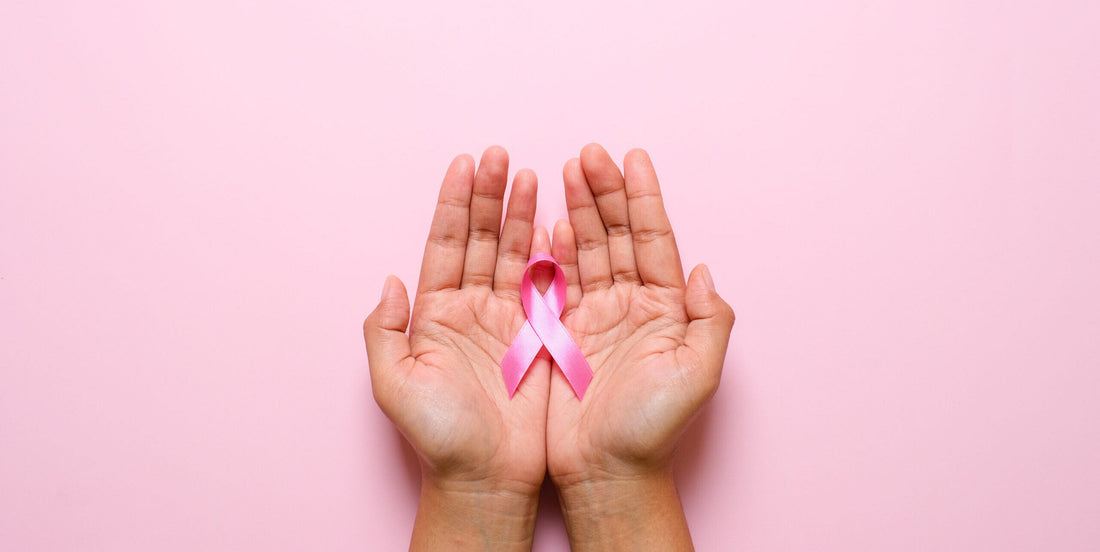
October Breast Cancer Awareness: Tips for Prevention & Self-Care
Share
Every October, the world turns pink to spotlight Breast Cancer Awareness Month — a movement dedicated to education, prevention, and empowerment.
At Kota Botanics™, we believe that awareness is more than a campaign — it’s a commitment to caring for ourselves and each other. Let’s take a few mindful minutes together to learn the facts, explore prevention, and embrace daily rituals of self-care and love.
🎗️ Why October? The Story Behind Breast Cancer Awareness Month
Breast Cancer Awareness Month (BCAM) was first established in October 1985 through a partnership between the American Cancer Society and the pharmaceutical division of Imperial Chemical Industries (now AstraZeneca) — the company that developed early breast cancer drugs.
The goal was simple yet powerful:
To promote mammography as the most effective tool to detect breast cancer early.
Since then, BCAM has grown into a global movement recognized every October — marked by the pink ribbon, community events, survivor stories, and widespread education.
Today, it serves as both a celebration of progress and a reminder of ongoing challenges, including disparities in care, awareness, and outcomes across different communities.
🌍 The Numbers That Matter
Breast cancer remains the most common cancer among women worldwide.
- Globally, in 2022 there were about 2.3 million new cases of breast cancer and 670,000 deaths.
- In the U.S. alone, in 2025 it’s estimated there will be 316,950 new invasive breast cancer diagnoses among women, plus 59,080 cases of ductal carcinoma in situ (DCIS).
- Approximately 42,170 women are expected to die from breast cancer in 2025.
- Lifetime risk for women in the U.S. is about 1 in 8 (13 %).
- The incidence of new cases is rising gradually (around 0.3 % per year) and younger women (under 50) appear to be increasingly diagnosed in recent years.
- While far less common, men also can develop breast cancer (about 1 % of cases).
These numbers underscore why awareness, screening, and preventive habits are so important.
Early detection saves lives, but prevention and body awareness are equally powerful tools.
💡 What Causes Breast Cancer?
The truth is: no single cause explains all breast cancers. It’s usually a mix of genetic, hormonal, lifestyle, and environmental factors.
Here’s how those risk factors break down:
Risk Factors You Can’t Change
-
Age: Risk increases as you grow older.
-
Biological sex: Being female is by far the strongest risk factor.
-
Family history & genes: Having a close relative (mother, sister) with breast cancer—especially at a young age—raises your risk. Inherited gene mutations (e.g. BRCA1/2) can further elevate risk.
-
Personal history: If you’ve had breast cancer before, or certain noncancerous breast conditions (e.g. atypical hyperplasia), your risk is higher.
-
Reproductive milestones: Starting menstruation early (before age 12) or entering menopause late (after age 55) are associated with increased risk.
-
Dense breast tissue: Denser breast tissue both increases risk and can make detection harder.
-
Radiation exposure: Prior radiation to the chest (e.g. for other conditions) can increase risk.
-
Hormone therapy: Use of combined hormone replacement therapy (estrogen + progestin) after menopause carries some risk.
Risk Factors You Can Influence (Lifestyle & Behavior)
Though not guarantees, evidence suggests that some habits may reduce or raise breast cancer risk:
-
Maintain a healthy weight: Excess body weight after menopause is linked to higher risk.
-
Be physically active: Regular exercise is protective.
-
Limit alcohol consumption: Even modest alcohol intake is associated with increased risk.
-
Breastfeeding: Breastfeeding for longer durations may offer some protection.
-
Be cautious with hormone use: Use of certain hormone-based contraceptives or hormone therapy should be considered carefully, in consultation with a provider.
-
Healthy diet: Diets rich in fruits, vegetables, whole grains, and lower in processed meats may help.
-
Avoid or quit smoking: Smoking is a risk factor in some studies.
Prevention & Early Detection: What You Can Do
Because breast cancer is multifactorial, there’s no guaranteed prevention. But many experts encourage a layered approach (i.e. stack what you can do).
Here are key strategies:
1. Adopt Healthy Lifestyle Habits
-
Stay active: Target at least 150 minutes/week of moderate exercise (e.g. brisk walking) or more if possible.
-
Watch weight, especially post-menopause: Prevent weight gain with a balanced diet and regular activity.
-
Limit (or skip) alcohol: The less alcohol, the better.
-
Eat plant-forward: More vegetables, fruits, legumes, whole grains; less processed meat.
-
Stop smoking: If you smoke, quitting has many benefits, including cancer risk reduction.
-
Breastfeed if feasible: It may provide a modest protective effect.
-
Review hormone use: If you use menopausal hormone therapy or hormonal birth control, discuss risks vs benefits with your doctor.
2. Be Proactive with Screening & Self-Awareness
-
Know your baseline & breast “normal”: Become familiar with how your breasts normally look and feel so you spot changes more readily.
-
Perform regular self-checks (optional but useful): Many organizations emphasize awareness more than formal monthly self exams, but you can still check for changes (lumps, dimpling, skin changes, nipple changes).
-
Follow screening guidelines: Many health agencies recommend starting mammograms by age 40–50 (depending on risk) and repeating every 1–2 years. For higher-risk individuals, additional imaging (MRI, ultrasound) may be needed.
-
If you’re high-risk (e.g., strong family history or genetic predisposition), talk to a specialist about enhanced surveillance, chemoprevention, or prophylactic options.
-
Don’t ignore symptoms: Any persistent lump, breast/nipple discharge, skin changes, or other alterations should be evaluated promptly by a clinician.
Integrating Gentle Breast Care
While clinical screening and lifestyle modifications are the foundation, many people like to incorporate gentle breast care—for comfort, skin health, and a ritual of self-connection. One product to consider is Foria Intimacy Breast Oil with Organic Botanicals from Kota Botanics.
Here’s how you might thoughtfully integrate such a product into your self-care routine:
What is Foria Intimacy Breast Oil?
This is an oil formulated for the breast area, made with organic botanicals. Details on ingredients, usage instructions, and safety should be reviewed on the product page.
How to Use It Safely (Suggested Guidelines)
-
Patch test first: Try a small amount on your skin away from the breast (e.g. inner arm) to check for irritation or sensitivity.
-
Use gently: Apply with light strokes; avoid aggressive massaging or pressure, especially over lumps or inflamed areas.
-
Avoid broken skin or wounds: If you have open areas or cuts, skip use until fully healed.
-
Know what the ingredients are: If any botanical extracts might be irritating or allergenic to you, proceed with caution.
-
Don’t replace medical exams: Using a breast oil is not a substitute for screening, self-checks, or medical evaluation.
Potential Benefits (Non-clinical, Self-Care Focus)
-
Promotes skin hydration and comfort (especially if skin is dry or sensitive)
-
Gives a moment for mindful connection, body awareness, and relaxation
-
Can complement other breast care rituals (e.g. after a shower, in self-exam routines)
✨ Remember: This practice is about connection and awareness, not diagnosis. Always consult your healthcare provider about any concerns.
💕 Your Health Is Worth the Time
Breast Cancer Awareness Month is not just about pink ribbons — it’s about education, empowerment, and early action.
This October, let’s:
-
Schedule our screenings.
-
Support our sisters and loved ones.
-
Honor our bodies with mindful care.
Because when we nurture ourselves, we nurture our health — and that’s something worth celebrating every single day.

